Zero Waste Town Kamikatsu
This time, we visit Kamikatsu, Japan's first town dedicated to achieving zero waste, and see why it's gaining worldwide attention. One reason: its recycling system, in which waste is separated into 45 categories. 80% gets recycled, which reduces incineration. There's also a free used goods shop and more. These efforts have attracted young people and revitalized the town. Our host Alisa Evans visits to get a "zero waste" experience.
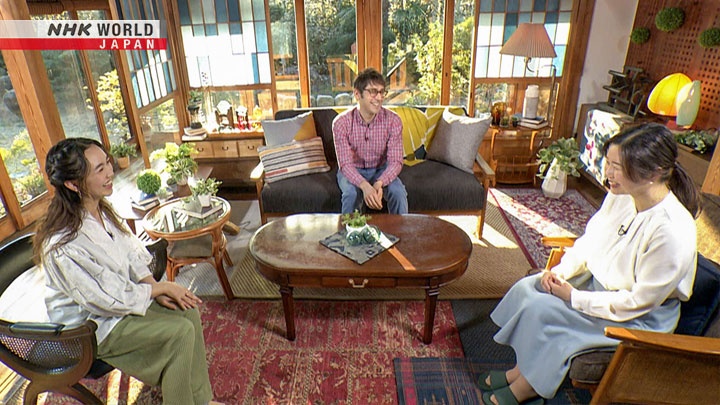
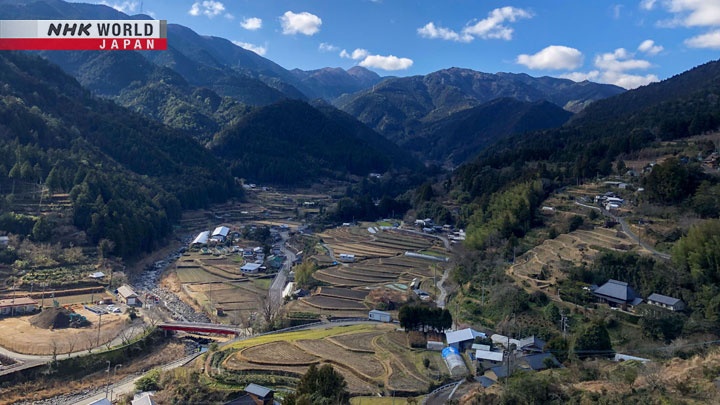

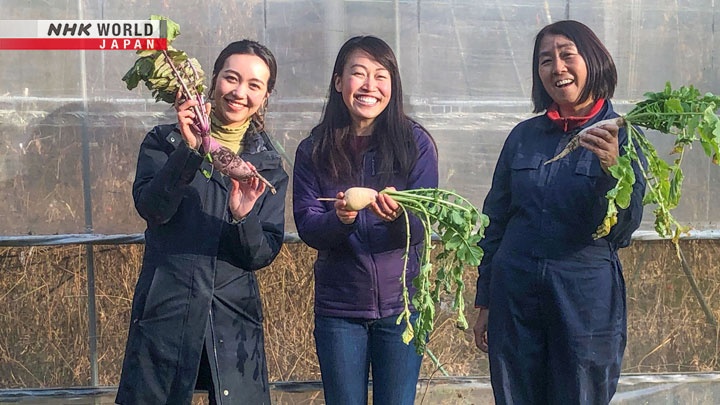
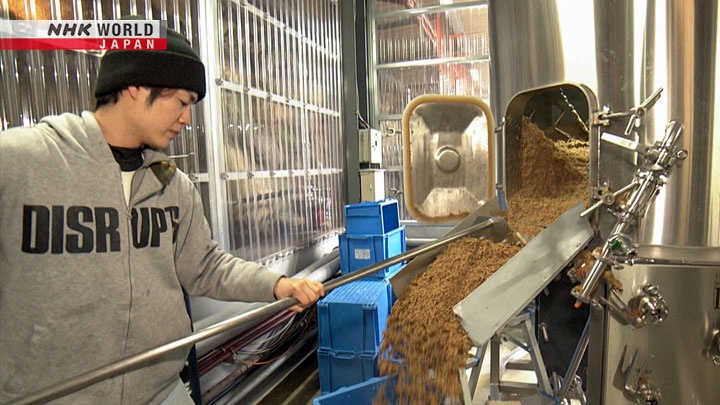
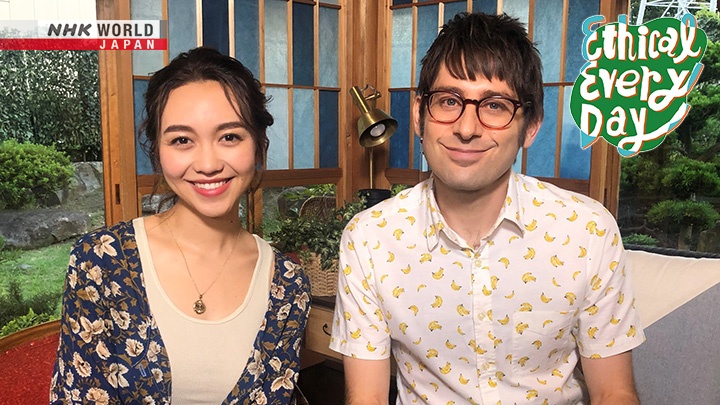
Transcript
Kamikatsu is a mountain town in Tokushima Prefecture on the island of Shikoku.
In 2003, it became Japan's first town to declare a Zero Waste goal.
It's gaining attention for its ethical practices.
As a part of that effort, its residents separate their garbage carefully into a total of 45 categories.
The town, which is facing depopulation, is regaining vitality thanks to new projects.
This time on Ethical Every Day, we learn more about this Zero Waste Town, Kamikatsu.
Hello, this is Alisa Evans.
Welcome to Ethical Every Day.
Hello! Matthew Chozick, very ethical.
On this show, we share our thoughts and discuss ways we all can minimize our impact
on the global environment and create a healthier society.
Matthew, have you heard of Kamikatsu before?
No, I haven't heard of it before.
So sorry, Kamikatsu-ins.
But like residents of Kamikatsu, I also try to get my waste down to zero.
I do things like not wearing more than, say, seven articles of clothing per week.
Wait, seven days a week, so isn't that normal though?
- I suppose I try to not change too much.
- OK.
But how do we get to Zero Waste?
Hey Matthew!
Yes, House.
We did an episode on Zero Waste a while ago.
Do you remember?
Let's start with a quick refresher.
Nice. Thank you.
As the name implies, Zero Waste means trying to reduce garbage and other wasteful practices to zero.
Today, Japan's households, businesses and so on produce some 41 million metric tons of waste a year.
That's about 900 grams of waste per person per day.
About 20 percent of that waste is currently recycled.
That means most of it is thrown away as-is, and is later incinerated, buried and so on.
Meanwhile, in Kamikatsu, there's still some garbage, but they recycle about 80 percent of their waste.
The key is sorting.
They actually sort their waste into 45 different categories.
For example, paper.
In Kamikatsu there are categories like magazines, newspapers, paper tubes, and more - nine categories in all.
Wow! That sorting must be really tough.
Yeah.
So, Alisa, I heard you actually visited Kamikatsu and experienced this yourself?
That's right, House.
Let's check out my trip to Kamikatsu, the Zero Waste town.
Kamikatsu, a town in Tokushima Prefecture nestled between mountains.
Its 1,400 residents live surrounded by bountiful nature.
Alisa is here to learn the secrets of a zero-waste life.
Let's see what she finds.
This is the main facility of this zero-waste project, it's called Kamikatsu zero-waste center.
It also has a hotel next to it.
Here's the town's hotel!
It offers a zero waste experience during your stay.
Is this... soap?
Yes, just cut off enough
to use during your stay.
It's like a slice of cheese!
The interior is full of zero-waste innovations.
Like the lobby's chandelier, made of upcycled bottles.
The window panes are reused too.
They're old panes from houses around town which no longer needed them.
Double panes are used for effective insulation.
These window panes number 540 in all!
Great for the environment and stylish to boot.
Alisa separates the trash from her own room.
There are six different categories.
I should probably go wash this before I throw it away.
I got this cleaned.
So, this should go... somewhere...
It's probably here, right?
In here?
So, let's put this in to, dirty plastic and paper?
Hmmm. This is harder than I thought.
Let's see how well I did it.
The Zero Waste Center next to the hotel is the town's sole garbage collection site.
There are 45 categories for trash.
A hotel staff member shows Alisa how it works.
Contact lens case lids?
This goes in "assorted metals."
These get properly recycled, huh?
Yes.
Metals are sorted into five categories for easy recycling.
People from around town come one after another to sort their trash here.
There are no garbage trucks in town.
The town's residents come here themselves to dispose of their trash.
They've all become pros at carefully sorting their garbage.
At first, I wasn't sure which
trash went in which category.
Now that I'm used to it, I do
it at home before coming here.
It's pretty easy now.
In the past, Kamikatsu disposed of trash with controlled fires or small incinerators.
But that released a large amount of dioxins,
which was against the government's regulations, forcing the town to stop burning.
What to do?
Without the money to build new incinerators,
residents had to rely on those from neighboring towns, which in itself cost money.
Instead, they decided to carefully sort their garbage and send many items to recycling.
That reduced the number of items sent to the incinerators.
Making this project a success involved educating residents
that recycling would actually lead to income for the town.
I notice that next to the word
"income" is written "10 yen."
That's right. 1kg is worth 10 yen.
If we collect this properly,
without burning it, we can sell it.
These cartons can be reused as recycled paper, netting 10 yen per kilogram.
Newspaper pages, recycled into new newspapers, net 15 yen per kilogram.
Paper clips and other assorted metals are reused in a number of metal products.
Part of the income generated is returned to the town's residents.
We call this our "point service."
You receive one point for each of
these eight types of trash you bring.
In this service, users receive one point for items that are not easily collected,
or can be sold for high prices.
Points can be traded in for items like toilet paper - 5 points,
notebooks - 10 points, or kitchen detergent - 20 points.
Knowing there will be a return
for yourself, like points,
makes it easier to stay motivated
to keep separating trash!
Thanks to these steady efforts, the town now brings in some two million yen in income per year.
Zero waste isn't just practiced by individuals.
Companies here have gotten in on the efforts, too.
This local cafe attracts many diners with delicious meals.
These great-looking dishes are made with every bit of local vegetables,
all while generating as little waste as possible.
It's an event called "Zero Waste Kitchen."
The meal this time includes daikon radish peel, and soup made with water used to rehydrate dried shiitake mushrooms.
Next up is this zero waste beer.
But, wait - what does it mean for a beer to be zero waste?
We visit the local brewery to find out.
It's brewing day, so we're
making beer right now.
Making beer requires malt, which is made by germinating dried barley.
In brewing, malt is mashed in hot water to produce what is called wort.
The malt lees produced amount to about 600 kilograms per beer batch, or about 20 metric tons per year.
The brewery wondered if they could reuse this large amount of malt lees in the beer-making process.
They eventually found a machine that can turn food waste into liquid fertilizer.
Starting in 2022, the company began using this liquid fertilizer to grow barley in its own fields.
That barley is then used to make beer.
This year, too, the barley fertilized with this fertilizer made from malt lees is quickly beginning to grow.
Just by drinking and enjoying our
beer, you're contributing to zero waste.
I hope more people get involved.
I brought you a little souvenir.
Oh, you shouldn't have.
Although everybody did.
It's a little Japanese tea cup.
And to tell you the truth, I got it for free.
- You stole it? That's not cool.
- No, I didn't.
- I didn't steal it. There is a recycle shop next to the Zero Waste Center.
- Yeah?
Yeah, and people in Kamikatsu town can bring things that they don't need anymore,
and anyone, even if you're from out of town, can take them home.
- Really? It's lovely.
- For free.
What a cool concept.
And at the shop, the people weight the items that are taken home.
And in 2022, about 400 kilograms of items were taken home by someone per month.
Wow. 400 kilograms per month of items in this small town,
that's like, what, 900 for Americans? It's like, 900 pounds?
Yeah, and the town has a lot of more great programs going, too.
Yeah. To learn more.
Let's speak to the zero waste promoter, Fujii Sonoe.
Hello Fujii-san.
Hi Fujii-san.
Hello!
Thanks for joining us.
Of course.
I was surprised to see residents
taking their trash to that center.
Amazing cooperation.
They realize these kind of movements
are happening worldwide.
We gradually guide them about
things like how to wash their cans.
It takes a while to get used to it,
and new products keep being released.
We have to rethink things each time.
I see.
When new products come out, you need
to think about how to separate the waste.
It never ends!
What about older residents
who can no longer drive and so on?
Yes, for those who can't drive
or others who need support,
it's only once every two months,
but we visit their homes to collect waste.
That's great.
And you've found various ways
to make this a fun experience.
Yes. For example, we help
people use cloth diapers.
Commercial diapers are burned,
so we want to reduce that waste.
Elder moms teach about cloth diapers,
and give other advice to young moms, too.
I bet lots of people would join in if
there were similar projects in big cities.
It's not just about sustainable use,
it's about creating human connections.
The people who make up a town change,
as do world circumstances.
The way we deal with townspeople changes, too.
We have to continue to create policies
that help dispel people's concerns
based on information we learn here.
Thank you for your time.
Thank you for having me.
Hey Matthew!
Yes, House?
People visiting and even moving to Kamikatsu as a result of these projects is really helping revitalize the town.
Excellent.
In the past ten years, it's added 300 new residents.
300?
For a small town of just 1,400, 300 new residents quite a lot.
Alisa, you met a few of those new residents, right?
Yes, indeed. There are some amazing young people who moved to Kamikatsu.
Let's check it out.
How exciting.
We visit a woman inspired to move here by the town's efforts.
Good morning.
Let's have a great lesson.
This is Ema Asami, who moved here from Nagoya in November 2022.
In Nagoya, she worked as a Pilates instructor.
Since moving here, she's continued online lessons with her old students, and is training town locals, too.
These days, you can reach anywhere
if you have an internet connection.
I can do my Pilates instruction here, too.
Ema was inspired to move to Kamikatsu after seeing a film set here.
She works hard to live a zero-waste lifestyle.
This way of making coffee doesn't require a paper filter,
and dried coffee grounds can be used as deodorizer.
I always think about what I can do.
It feels good, and it's good for the planet.
I find that balance fun.
She's also working a project she hopes to commercialize to help contribute to the town.
Here it is.
No, this isn't a bingo machine.
It's a composter.
Add food scraps, and they're decomposed by microbes and turned into fertilizer.
It's pretty big.
Normally, Ema uses commercial compost to dispose of food scraps.
This soil contains microbes which turn those scraps into fertilizer.
But she wanted to make an original Kamikatsu composter using local materials.
She's currently on the hunt for something to put inside that will help food scraps decompose.
Some husks from a rice farmer.
People don't need them, so just ask.
I want to reuse them.
Great for a zero waste project.
Rice husks and bran are used as the base.
Also included are logs used to grow Kamikatsu's famous shiitake mushrooms...
tea leaves and stems rejected in the sorting process, and so on.
These items would normally be thrown away.
Kamikatsu inspires people to
think about things in a new way.
I hope this project helps even more
people learn about Kamikatsu.
Even people from outside Japan have moved to Kamikatsu.
Seen here meeting with a local farmer at the Zero Waste Center is Kana Watando,
who immigrated from Canada in 2020.
We were thinking about gathering young people who are interested in different topics
like rural revitalization, circular economy and environmental issues.
I think its not just like a lecture, but really lecture plus experience.
Watando provides local tours for people from abroad.
These "eco tours" are focused on sustainable living.
For example, visitors can enjoy harvesting yukō, the region's signature citrus, grown without agrochemicals.
With the help of a local cafe, she also shares tips on how to cook yukō without waste.
Here's a yukō-based cake.
I just think it is interesting way to introduce people to flexibility or versatility of the ingredient.
Maybe that's a good thing to bring back, so to speak.
Alisa visits a local farmer to get a feel for what these eco tours are all about.
May I join in?
Of course.
The daikon are ready for harvest,
so let's pull one.
The methods used in this field involve cultivating crops using only nature,
without tilling the soil or applying agrochemicals.
These vegetables, grown in Kamikatsu's fertile soil, are small, but famed for their sweetness.
All these things become nutrition
for the vegetables?
Yes, if you lay this grass down as
fertilizer, the soil becomes soft.
So people from around the world
will come and learn these methods?
Watando wants to provide travelers with an opportunity to take a fresh look at their daily lives.
She also hopes the tours will help local farmers who are short of labor.
I think the important thing is the exchange with local people,
so, we can help and then they help us and the it's how we think about sustainability for Kamikatsu.
How cool to see Watando-san spreading word of sustainable tourism.
And I love that all of these young people are moving to the area.
It really makes me want to join them, be part of the movement.
So Matthew, you're interested in moving, too?
In that case, we've got the perfect guest for you! Right, Alisa?
That's right, House!
And it sounds like she's arrived!
Hello.
- Hello.
- Hello.
This is Masumura Eriko.
She helps connect local communities
with people who want to move there.
What a cool job!
Thank you.
There are over 800 local communities and projects signed up to her service.
People looking to move can use the site to find the perfect place for them.
Recruiters from these communities can also contact prospective residents directly.
Masumura-san herself moved from Tokyo to Nagano Prefecture in 2017.
She now leads a sustainable lifestyle in the midst of bountiful nature.
In winter, you get great snowy views.
It looks beautiful in summer, after the rain...
There's so much to look at.
I never get bored.
You seem to be having fun leading
a nice active life.
Due to the pandemic, many people
have been rethinking their lifestyles, right?
Yes, it inspired many to do so.
There are also many beginning to
question consumeristic life in big cities,
and who want to learn new skills
to lead more fulfilling lives.
Not quite 100% self-sufficiency,
but growing one's own crops, etc.
I've often wanted to live in an
old Japanese house near the sea.
With a cat or two. That'd be great.
What do you think?
How about on a remote island?
Never done that before!
There's an island town in
Shimane Prefecture called Ama.
You can only get there by
airplane or ship.
What if you swam?
- Swim?!
- Swim?!
There are ships, right?
Yes.
Oh, right.
I never would have known living on
an island like that was possible.
That's a fun part of your service.
Yes, you can think of it as a
kind of trip, visiting many places.
How should people looking to lead ethical
lifestyles choose new places to live?
It's less about the place and more
about the lifestyle you want to lead.
It's important to think about that
then take the first step and try it out.
We hope this episode inspired you to imagine ways toward a more ethical, sustainable lifestyle!
See you next time on Ethical Every Day.